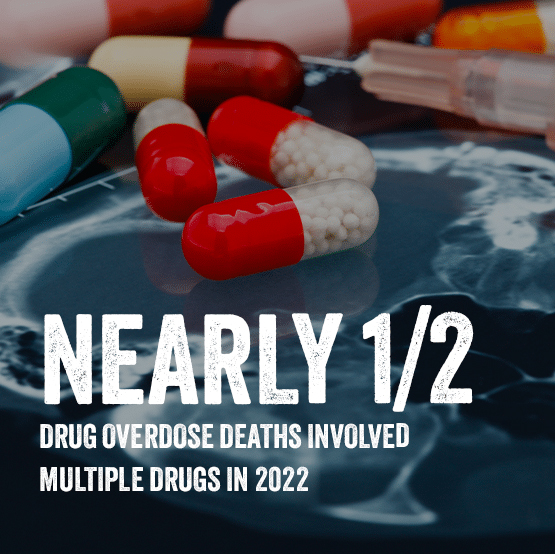An opioid overdose requires immediate medical attention. Call 911 immediately if you or someone you know exhibits any of the symptoms.
×
- Substances
- Dangers
- Naloxone
- Community Care
- How to Help
- Road to Recovery
- Videos
- About Us
- Resources
An opioid overdose requires immediate medical attention. Call 911 immediately if you or someone you know exhibits any of the symptoms.

Polysubstance use, prescribed or not, can have unpredictable and dangerous effects. Each substance affects the body differently, and combining them increases the potential threat.
Polysubstance use can happen by accident when taking illegal substances. It can also happen on purpose.
Some people may mix one stimulant with another stimulant to increase their effect. The same can happen with mixing multiple depressants. There’s also danger when stimulants and depressants are combined. Combining stimulants with depressants, such as methamphetamine and alcohol, can amplify the effects of both.
Mixing substances can lead to serious consequences.
Today, many stimulants and depressants sold illegally may contain fentanyl. Substances like heroin, cocaine, meth, ecstasy or any stimulant or depressant bought from dealers can contain unpredictable amounts of fentanyl, increasing the risk.
Taking unknown substances is risky. Mixing unknown substances is even riskier.

One way to reduce the harm of mixing substances is by using harm reduction methods. Tools like fentanyl test strips and naloxone can decrease the risk of overdose and other dangers associated with mixing substances.
Resources
Know the Substances
Learn More
Resources
Know the Dangers
Resources
Know the Resources
Learn More
Resources
Know the Facts
Learn More
Resources
Know the Signs
Learn More
Resources
Know the Resources
Learn More
Resources
Know the Stories
Learn More
Resources
About Know the Dangers
Learn More
Resources